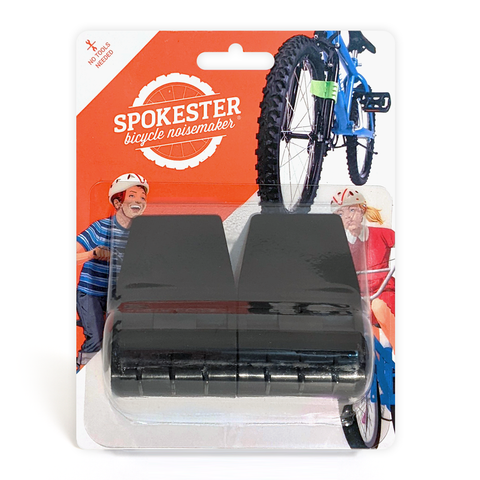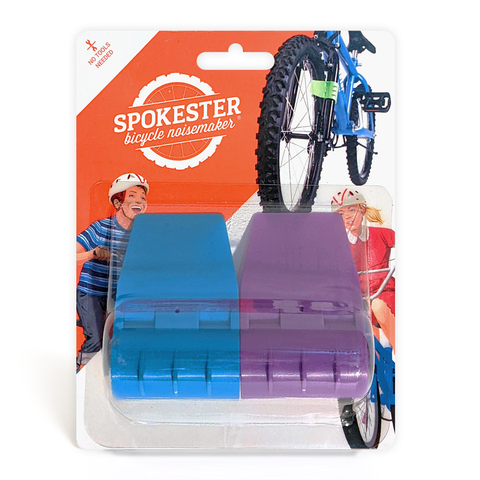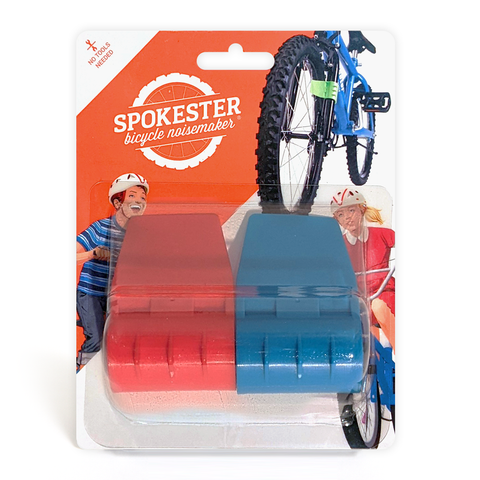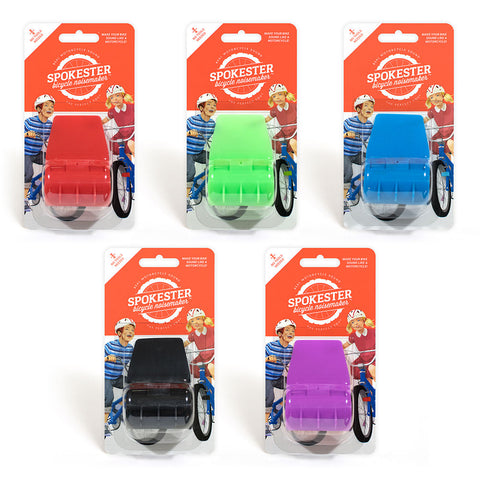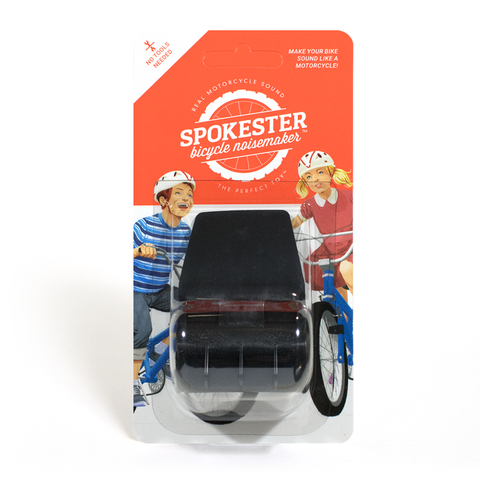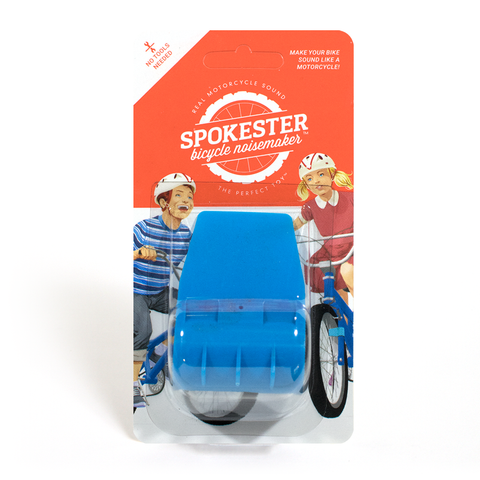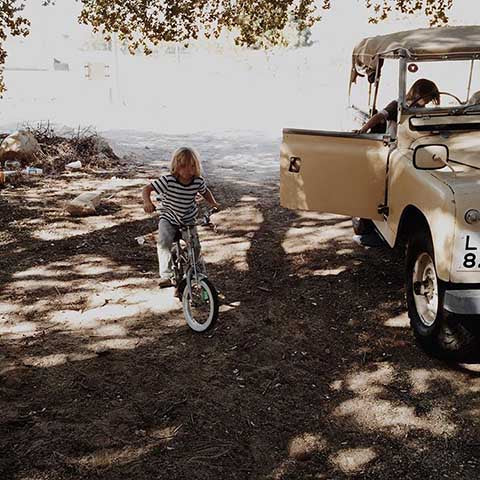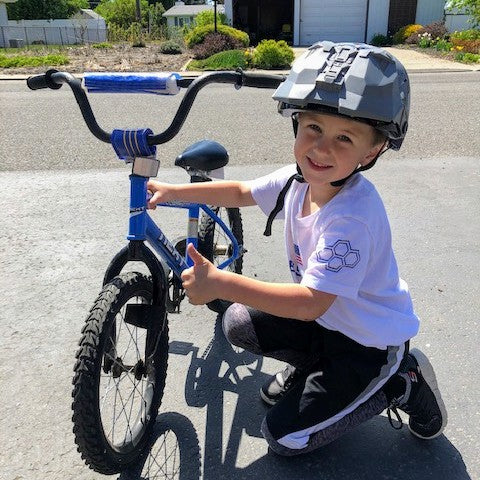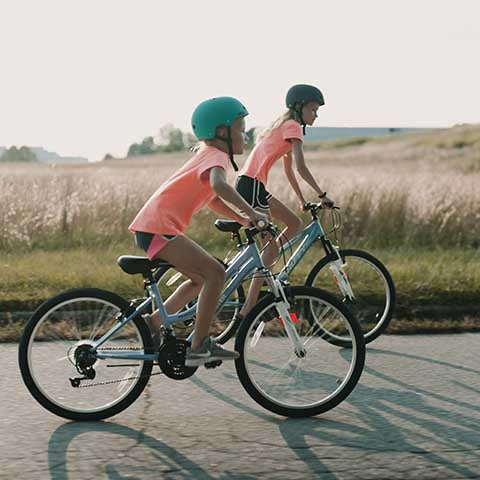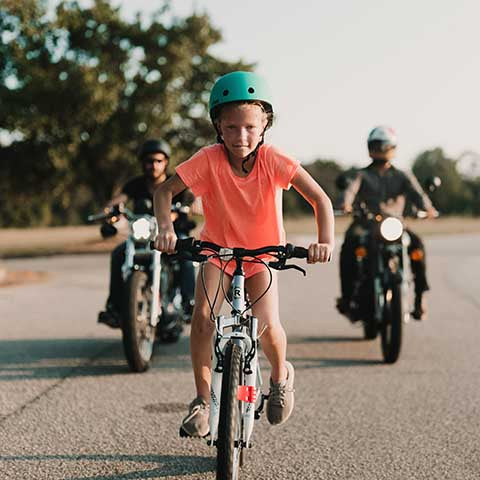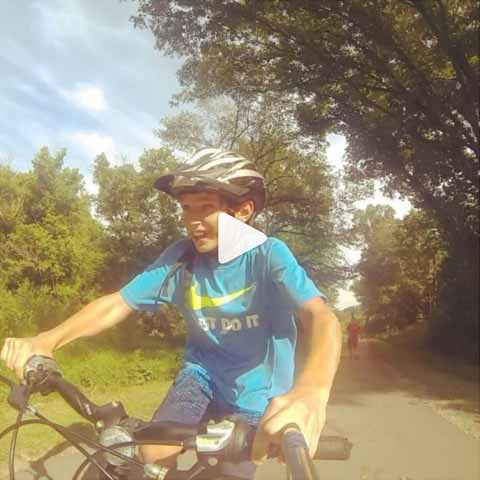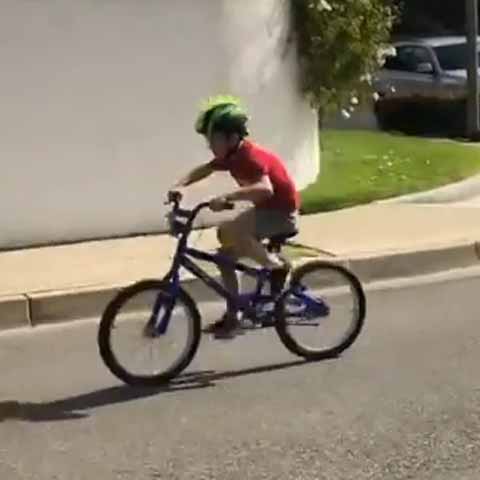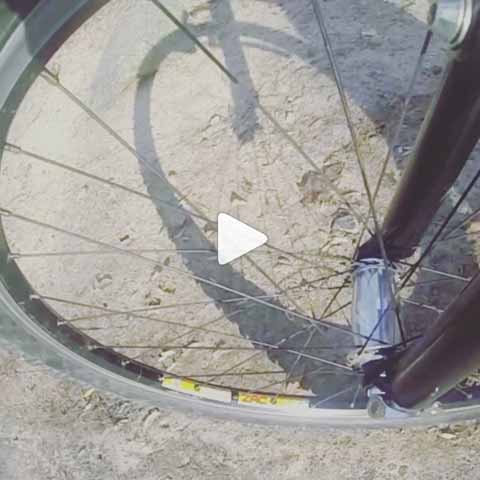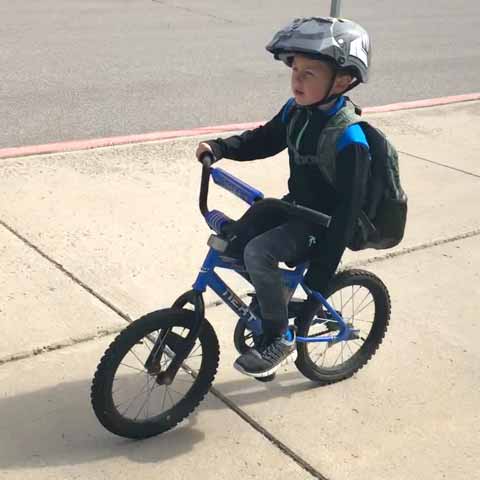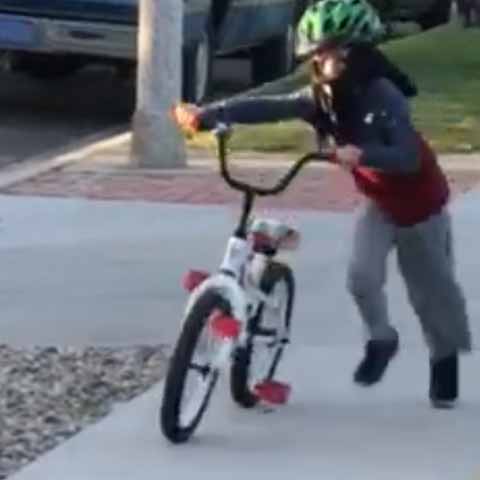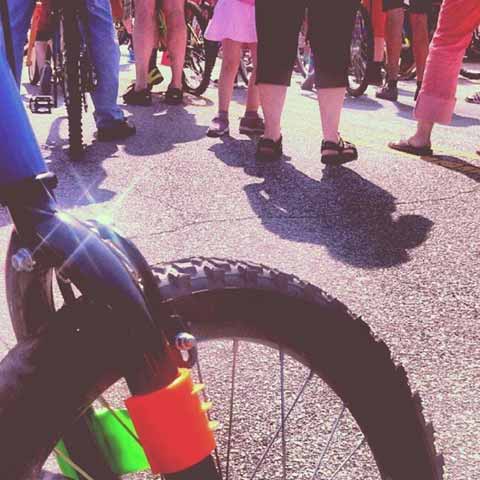15 Questions You Should Be Asking About Kids’ Bike Helmets
"I look like a dork."
"It feels weird."
"But none of my friends have to use one!"
Any of this sound familiar? More than likely it does if you're a well-meaning parent forced to wage a daily battle with your children over wearing a bicycle helmet. And for some, making headwear mandatory may even seem a smidge hypocritical. After all, it wasn't all that long ago that helmets were barely given a second thought. For previous generations, if you fell off your Schwinn and got a boo-boo, you got back up, rubbed some dirt on it, and pedaled on your merry way.
You also hand-wrote your pen pal and learned that Pluto was a planet.
But, times change, and we advance. Health and safety aren't exempt from this. Our understanding of the short- and long-term impact of head injuries has skyrocketed in the last few decades. It's even front-page news for organizations as big and powerful as the NFL.
The most important job for any parent—then, now, and forever—is to keep your kids safe. And when it comes to two-wheeling, we're here to help. This guide addresses the most important things to consider when it comes to protecting your kids' noggins once they take to the streets.
How do kids' bike helmets work?
This may seem obvious, but when you consider how many people treat helmets purely as accessories, maybe it's not. This is the wrong way to think about them. The truth is, they're potentially life-saving protective devices.
When fitted and worn correctly, a helmet serves as a shock absorber when a person's head comes into contact with a surface (say, the pavement). This accomplishes three things:
- Acts as a buffer to prevent direct contact between the head and the surface
- Spreads the force over a wider area for a less-concentrated (and therefore less-dangerous) impact
- Slows the head's deceleration, reducing the likelihood of a fracture and/or concussion
It doesn't matter if that surface is concrete or grass, the resulting blow without a helmet can be devastating depending on the speed of the bike and height of the fall. This is especially true for younger kids with less-developed bones and bodies. Since most bike injuries do in fact involve a person's mug, adding that critical layer between your tyke's skull and the ground is an easy way to save yourself a lot of grief.
When should my kid wear a bike helmet?
Every. Single. Time.
Even if the little devils are merely skid marking the driveway for kicks, they should be wearing helmets. Nobody—not them, not you, not professional cyclists—can predict when a crash will happen (that's what makes it a crash). Kids in particular don't understand just how many factors are out of their control in this whole scenario. Even the most careful and coordinated bikers in the gang are susceptible to blown tires, brake failure, hidden cracks and holes in the ground, wet leaves, careless motorists… and the list goes on.
You don't need a slide rule for this one. If wheels are in motion, hard hats on.
How effective are bike helmets really?
Young bicyclists can reduce the risk of head injury or death by up to 85 percent if they wear a helmet.
This quote from Ann Brown, former Chairman of the Consumer Product Safety Commission (CPSC), was released in conjunction with a 1995 report on kids' feelings towards bike helmets. In the 20+ years since then, similar studies have been done that have reconfirmed this figure within a few percentage points each time. In fact, the various studies feature remarkably similar statistics. On average:
- 300,000–400,000 children are hospitalized from bike injuries each year
- Of these, at least 10,000 have to stay in the hospital for multiple days
- The 5–14 age group has the highest injury rate among all cyclists
- Bicycle accidents are the leading cause of death in this age group
- Two-thirds of deaths are due to head injury
The thing is, broken bones heal. Broken brains don't. And the injuries aren't always obvious because the bleeding and bruising can be internal. This can lead to very damaging neurological effects and serious impacts on cognitive function. In plain English, your child literally may not be able to think straight after a helmet-less crash.
When we're talking about those kinds of numbers, 85 percent equates to a lot fewer trips to the ER.
Are kids' bike helmets legally required?
Bicycle helmet laws vary by individual state. Since such laws began to emerge in 1987, 22 states including the District of Columbia have adopted some sort of helmet policy. Over 200 localities across the country also have their own ordinances governing the use of helmets by children, primarily those under 18.
To see if your state or town falls within this category, the Bicycle Helmet Safety Institute (BHSI) keeps a comprehensive and updated list on its website. But, at the risk of sounding like a parent, remember that just because something isn't illegal doesn't mean you should do it!
Are there certain bike helmet standards I should be looking for?
Even though there are no federal laws regulating the use of helmets, the US government does take bike safety seriously and has created helmet standards through the CPSC. The best way to make sure a helmet provides a reliable level of protection for your kiddo is to look for a CPSC sticker, usually on the inside.
Helmets also meet acceptable standards if they've been tested and labeled by other similar organizations. These include the American Section of the International Association for Testing Materials (ATSM), American National Standards Institute (ANSI), and Snell Memorial Foundation (Snell).
How much should I pay for a quality kid's bike helmet?
The old adage "You get what you pay for" tends to hold up pretty well. Fortunately for your bank account, that's not necessarily the case with bike helmets. BHSI conducted a series of tests several years ago using six different types of helmets. Half the helmets cost at least $150. The other half were under $20. You might think that the budget versions would crack simply by looking at them, but the results were surprising. Impact performance was nearly identical across all six models.
The moral of the story is that price doesn't always equate to quality. Cheap helmets can still be good helmets. Just double-check that whatever kind you're buying has a sticker from one of the organizations above to make sure it's up to snuff.
Is it okay for kids to use a multi-sport helmet when riding?
Is your miniature daredevil skating half-pipes in between popping wheelies? If so, you may be tempted to maximize both cost- and space-efficiency by investing in one catch-all helmet. Makes sense on the surface, but consider this before you head down that path.
It's usually best for your little one to use a sport-specific helmet. Just like you (probably) wouldn't put a football helmet on Bobby and tell him to go have fun on the trails, you shouldn't just throw on a skating, roller-hockey, or other type of wheels-related helmet and call it a day. Skateboarding, for instance, requires a multi-impact helmet because falls are common. Bike helmets, on the other hand, are single-impact models – i.e., one accident and they're toast. They also have vents for better airflow, unlike those specific to skating.
That said, we're not categorically eliminating multi-sport helmets here. As long as a kid's helmet sports a CPSC sticker, it's safe for cycling. Besides, manufacturers have picked up on the popularity of skating-style helmets these days, so it's now easier to find bike-approved models using that design.
What's the difference between hard-shell and soft-shell bike helmets?
Without launching into a physics lecture, bike helmets are built out of expanded polystyrene (EPS). This thick type of foam is what absorbs and disseminates the energy transferred to the head from a crash.
Hard-shell helmets feature, surprise, a hard outer shell on top of the foam. This layer of plastic or fiberglass helps hold the EPS together upon impact. It also shields the EPS from sharp objects that may puncture it.
Rather than a hard outer layer, soft-shell helmets contain a thicker layer of foam. They can come with a cloth cover or some sort of surface coating to help hold the EPS together in a crash.
Either type is safe as long as it has that little CPSC sticker on it. They have the same interior, so it's really just a matter of what style you (and your child) like best and which is most comfortable. Hard-shell helmets are a bit sturdier, but can be heavier. Flip this around for soft-shells, which tend to be lighter but somewhat less durable.
How should a kid's bike helmet fit?
According to the National Highway Traffic Safety Administration's guide to bike helmet effectiveness, "Wearing properly fitted bicycle helmets is the single most effective way to reduce head injuries and fatalities resulting from bicycle crashes." The key phrase in there is properly fitted. Unsurprisingly, then, there are countless resources out there providing pointers on the fitting process. Information overload strikes again.
Don't worry, we've got you covered. Here are a few simple steps that will leave you confident each time your kid rolls out of the garage.
- Measure your child's head: This is critical. Don't just assume that the age range suggested by the manufacturer is right for your son or daughter. To properly size, measure the circumference of your little one's head above the eyebrows. Make sure he or she isn't wearing a hat, and that any long hair is tied at the base of the neck.
- Adjust the chin strap: Most straps are adjustable, but you want to be sure they can adjust well enough to fit your particular child's head. Laying flat against his or her face, the straps should form a "Y" below each earlobe. If there's a locking mechanism, slide that into place. You should be able to fit one or two fingers between the strap and your little one's skin, signifying that it's snug but comfortable. It's smart to double-check this before each ride (and get them to do it once they're old enough) since straps naturally loosen over time. For other items to inspect on your children and their bikes before riding, check out our full bike safety checklist.
- Check the helmet's resting position: Make sure the helmet is level on the crown of your kid's head and comfortably touching the head all the way around. If it's tilted too far backward, it exposes the forehead, turning the helmet into an ornament rather than a safety device. If it's too far forward, it could impact visibility. To check whether or not the helmet's level, it should be no more than one to two adult finger widths above the eyebrows or eyeglass frames if glasses are worn. The rim of the helmet should be visible if he or she looks up.
- Give it a whack: In other words, test it out. Have your kids shake their heads hard and try to twist and pull on the helmet. It should stay snug and pull down slightly when they open their mouths. If it moves more than an inch in any direction, check the straps again. Once everything's properly in place, make sure they can still see and hear clearly before giving them the go-ahead.
How do bike helmet pads work?
Let's say you've measured your kids' heads, played with their chin straps, slapped the helmets around, and you're still having trouble finding the right fit. Fret not, that's what internal padding is for.
Pads help to customize the inside of the helmet to the shape of kids' heads. Start by placing them along the front, back, and sides of the helmet, leaving some gaps to help with air flow. They should touch the head evenly all the way around. Pads come in different thicknesses, so you can play around with what works best for your kids and replace thicker ones with thinner versions as they grow.
Bottom line, pads should be the final touch on your way to snug-but-comfortable using the handy-dandy guidelines above.
Can I reuse a bike helmet after a crash?
No dice. As quipped by the Advocate Children's Hospital, "One crash and it's trash." Something many people don't realize is that bike helmets are built to break. The EPS foam crushes on impact, which is what makes it an effective shock absorber. The result is a trip to the store for a new helmet rather than a trip to the emergency room.
Even if a helmet doesn't show any signs of damage after a head-on collision, it's a good idea to replace it. It can be hard to see how and where the foam has been crushed to prevent injury. Cracks also may have formed beneath the outer shell. This greatly undermines the helmet's structural integrity and makes it less likely that the device will work the way it's supposed to next time.
Before you head to Dick's or Amazon, check in with the helmet's manufacturer. Most will inspect it to see if it needs replacement, and some will go ahead and give you a new one if it does (often at little or no charge).
When should I replace my kid's bike helmet?
Pat yourself on the back if you said "after a crash." But even if little Joey and Jenny are model riders who've never come remotely close to falling off their Huffys, bike helmets do have a limited lifespan. Generally speaking, they should be replaced every couple years for a few reasons:
- Size: Kids grow, and they're really good at it. At some point, the helmet you bought for your five-year-old is going to outlive its usefulness simply due to size. Use the above tips to make sure helmets still fit properly over time, and if they don't, it's time to upgrade.
- Wear and tear: Helmets can get dinged up even if they haven't been in a full-on crash. Any time a helmet experiences a hard impact—such as dropping it—its structural integrity could be compromised. You may want to have a chat with your children about this to limit the abuse to their safety lids.
- Temperature: Heat can affect a helmet's shape. Keeping it in a space no warmer than room temp ensures that shells won't be deformed, which can impact their strength. This is good advice for those of you who leave bikes and accessories in hot garages during the summer.
- Sunlight: The same sun that can bake your kid's helmet into submission can also shine it to death. Ultraviolet rays penetrating the shell tend to make it more brittle over long periods of exposure. This is another one of those invisible effects to keep in mind.
Be careful when it comes to hand-me-downs. Even if there are no visible cracks or signs of degradation, there may be damage you can't see from one or more of the above reasons. Also, if they were made before 1999, they might not comply with modern CPSC standards. In fact, if helmets from the 20th Century are somehow still floating around yard sales and thrift stores, it's best that you just keep moving.
What is MIPS helmet technology all about?
We need another acronym like we need a hole in the head. But, this one's for a fairly-new technology that's gotten a lot of attention for its unique approach to preventing such holes.
Standing for "Multi-Directional Impact Protection System," MIPS is based on the idea that traditional means of designing helmets are inadequate. They've been built and tested to withstand direct impact, but collisions are rarely direct. More often than not you collide with the ground or other surface at an angle, which can create dangerous rotational forces on your head and neck.
MIPS accounts for this by using a two-layer system. On the outside, you've got your tried and true EPS foam. Inside, MIPS features a low-friction liner with a "slip plane" that sits on your dome. The two layers slide against one another up to 15mm upon impact, further mitigating force to the rider's head.
The science behind MIPS continues to be debated in the cycling industry, but it's hard to question brand buy-in. Many helmet manufacturers now offer this technology in their models, which are roughly $20–25 more than traditional helmets. If you're in the market for MIPS, make sure the model you choose has the right designation since some come in MIPS and non-MIPS options.
What makes a kid's helmet "cool?"
No matter how much you try to reason with them ("And is it uncool to wear shin guards at soccer practice, Joey?"), bike helmets just seem to be a harder sell sometimes. According to Safe Kids USA, only 50% of children 5–14 even own a helmet and a mere 25% consistently use it. And the crazy thing is, most kids realize the dangers of not wearing one. Unfortunately, "It looks dorky" can override "Let's be safe" more easily at younger ages.
To avoid this, let your kids help choose their own helmets if at all possible. However, if your image-conscious offspring aren't part of the shopping experience, here are some of the more popular helmet trends in recent years:
- Pop-culture designs: Helmets like this Star Wars R2D2-themed model by Bell are big with younger kids. Similar designs are available from other major franchises like Disney and Marvel.
- Matte colors: Matte, particularly black, has been on the rise. This one from Nutcase adds a paintball-splatter effect, which has gone over well.
- Skate design: Bike-safe helmets with a skate-style look are becoming very popular. Bern has done a nice job adding fun graphics and nifty features like soft flip visors to their models.
- Fashionable: Yes, vogue has found its way to the youth riding market. Danish brand Yakkay makes helmets with removable "hat" covers that allow your kids to find their early chic streak.
- Adult-inspired: Sometimes "cool" just means "grown up." Brands like Kali are popular simply because their kids' helmets don't look like kids' helmets. Consider these once it's time to lose the glitter and stickers.
This is all great, but how do I actually get my kid to wear a bike helmet?
Just like with anything else, drill it into them early and often until it becomes second nature. Take seatbelts, which were once treated as an afterthought by previous generations. Today, we wouldn't dream of starting the car unless our toddlers were all strapped in. Kids pick up on these things, and habits formed early are harder to break.
Of course, as they get older, there may be some resistance. If and when that happens, there are a few things that can increase the likelihood of their continuing to wear a bike helmet:
- Comfort: You can control this. Just use our tips for fitting to make sure the helmet's as secure as it is comfortable. And definitely check that it's safety certified.
- Cool factor: They can control this. As long as the lid fits properly and ticks all the safety boxes, there's no rule that says it has to make your kid look like Poindexter. Include them in the selection process so that there's no room for the "But I don't like it!" excuse. Like a stubborn executive, they're more likely to do it if they think it's their idea, right?
- Friends wearing helmets: Neither of you can control this. Unfortunately, peer pressure is as alive and well today as it was when you were a tyke. Unless you want to stock a garage full of helmets for community use, concentrate on driving home these other things. Who knows, maybe your kid will become the neighborhood influencer, landing you heaps of praise from other grateful parents.
- YOU: Clearly, you can and should control you. Even more important than their friends or the helmets themselves is what you do as a role model. Wearing a helmet each and every time you ride shows you practice what you preach. "Do as I say, not as I do" is really not the approach you want to take when it comes to bicycle safety.
So there you go, your biggest bike helmet questions and concerns answered. Good luck with the shopping, the fitting, and if necessary, the convincing. They'll thank you for it one day!
← Older post Newer post →
